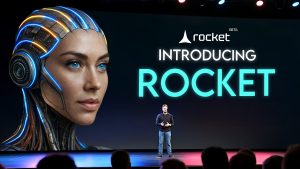Rethinking the Way We Test AI Models

In a world where technology evolves at a breakneck pace, assessing the performance of AI models remains a significant challenge. Often, benchmarks used to measure these models fall short, leading to inaccurate results and misconceptions.
However, a new initiative aims to address these issues, offering a fresh approach to testing AI models. This initiative promises to redefine how we understand and evaluate AI capabilities, focusing on both practicality and safety.
AI Benchmarks: The Current Scenario
In the world of AI, benchmarks are crucial for assessing the performance of language models. However, many experts argue that the existing benchmarks are too simplistic. They believe this leads to inaccurate results and a false sense of achievement. For instance, firms might claim top scores on specific tasks, but these don’t necessarily reflect the model’s overall capabilities.
The problem is further exacerbated by the lack of a standardized yardstick. Each company can choose benchmarks that highlight their strengths and downplay their weaknesses. This selective showcasing makes it difficult to compare models objectively. It’s akin to students memorizing answers for multiple-choice questions without understanding the subject. This practice might yield high test scores, but it doesn’t indicate true comprehension.
Anthropic’s Initiative for Better Benchmarks
Anthropic, an AI safety research company, has recognized these issues and proposed a solution. They plan to fund third-party groups to develop more comprehensive benchmarks. These new assessments will be significantly tougher, aiming to measure both practicality and safety. Anthropic believes this will offer a more accurate depiction of a model’s abilities. The focus will be on real-world applicability and minimizing risks associated with easily manipulated or jailbreakable models.
One key aspect of this initiative is the involvement of a large number of users. Future benchmarks may require thousands of participants to perform specific tasks. This approach aims to provide a clearer picture of a model’s performance in real-world scenarios. By involving the public, Anthropic hopes to create benchmarks that are both rigorous and relevant.
The ultimate goal is to create a more reliable and transparent benchmarking system. This will help companies refine their AI models with greater precision. In turn, users will benefit from a clearer understanding of each language model’s strengths and weaknesses. This initiative is a step towards more trustworthy and useful AI benchmarks.
Challenges in Implementing New Benchmarks
While the idea of new benchmarks is promising, it comes with its own set of challenges. Developing comprehensive assessments that are both practical and safe is no easy task. It requires significant resources and collaboration among various stakeholders. Moreover, the new benchmarks must be accepted universally to be effective.
Another challenge is the potential resistance from AI firms. Companies might be reluctant to adopt tougher benchmarks that could expose their models’ shortcomings. This resistance could slow down the implementation process. However, the long-term benefits of accurate benchmarks could outweigh these initial hurdles.
There’s also the issue of scalability. Managing thousands of participants for real-world tasks is a logistical challenge. Ensuring consistency and reliability across such a large sample size is crucial. Despite these challenges, the push for better benchmarks is a necessary step forward for the AI industry.
The Importance of Practicality and Safety
One of the main factors Anthropic emphasizes is practicality. The new benchmarks aim to ensure that AI models are genuinely useful for everyday tasks. This means moving beyond theoretical performance and focusing on real-world applicability. For example, can a language model accurately assist with writing emails, scheduling appointments, or providing customer service?
Safety is another critical aspect. Models that are easy to manipulate or jailbreak pose significant risks. The new benchmarks will aim to identify and minimize these vulnerabilities. The goal is to create AI systems that are not only efficient but also safe and reliable. Anthropic’s approach highlights the balance between practicality and safety.
Future Prospects and Collaborative Efforts
The future of AI benchmarking lies in collaboration. Anthropic’s initiative is just the beginning. It will require ongoing efforts from multiple stakeholders, including AI firms, researchers, and the public. Collaborative efforts can lead to the development of comprehensive and universally accepted benchmarks. This could pave the way for a more transparent and fair AI industry.
Furthermore, these new benchmarks could spur innovation. By setting higher standards, companies will be encouraged to improve their models continuously. This could lead to the development of more advanced and capable AI systems. The ultimate beneficiaries of these advancements will be the users, who will have access to more reliable and efficient AI tools.
In conclusion, rethinking the way we test AI models is essential for the industry’s growth. With Anthropic’s initiative and collaborative efforts, we can look forward to a future where AI benchmarks are both accurate and meaningful. This will help ensure that AI technology continues to evolve in a way that benefits everyone.
Rethinking AI testing benchmarks is not just an improvement but a necessity for the industry. By focusing on practicality and safety, the new benchmarks proposed by Anthropic promise a more accurate evaluation of AI capabilities. This initiative paves the way for more reliable and trustworthy AI models. Ultimately, the collaborative efforts aimed at these enhanced benchmarks will lead to significant advancements in AI, benefiting both developers and end-users.





